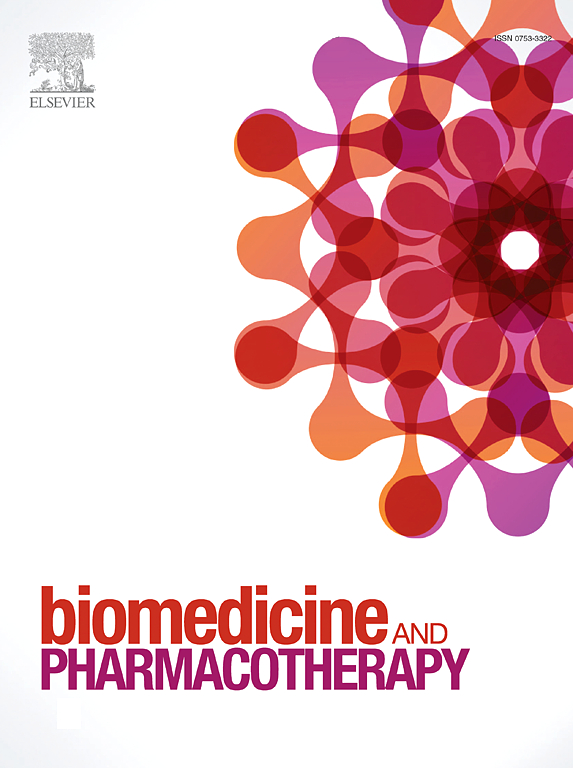阿片受体可用性降低和神经代谢偶联受损是雄性大鼠吗啡耐受性的特征:一项正电子发射断层扫描研究。
IF 6.9
2区 医学
Q1 MEDICINE, RESEARCH & EXPERIMENTAL
引用次数: 0
摘要
需要翻译神经成像技术来解决阿片类药物耐受性对脑功能的影响,并在中枢神经系统水平上定量监测阿片类药物受损的神经药理反应。对大鼠进行多参数PET研究。每天给大鼠吗啡诱导耐受性(15 mg/kg/天,连续5天),然后停药2天。然后,使用丁丙诺啡刺激(0.1 mg/kg, s.c, bup刺激)沉淀阿片效应,这可以安全地使可用的mu-阿片受体(MOR)充分占据。使用热板试验估计bup刺激对痛阈的影响。使用[11C]丁丙诺啡PET成像估计相应的MOR可用性(n = 4)。用[18F]2-氟-d -脱氧葡萄糖([18F]FDG) PET显像研究bup刺激或生理盐水后的脑糖代谢(n = 5-6)。与生理盐水对照组相比,吗啡治疗大鼠对bup刺激的抗感觉性反应减弱,证实了阿片耐受性(p 11C),丁丙诺啡结合在富含morr的区域减少(p 18F), FDG减少(p 18F),耐受大鼠的FDG摄取程度低于未使用阿片的动物(p 18F)本文章由计算机程序翻译,如有差异,请以英文原文为准。
Decreased opioid receptor availability and impaired neurometabolic coupling as signatures of morphine tolerance in male rats: A positron emission tomography study
Translational neuroimaging techniques are needed to address the impact of opioid tolerance on brain function and quantitatively monitor the impaired neuropharmacological response to opioids at the CNS level. A multiparametric PET study was conducted in rats. Rats received morphine daily to induce tolerance (15 mg/kg/day for 5 days), followed by 2-day withdrawal. Then, opioid effects were precipitated using a buprenorphine challenge (0.1 mg/kg, s.c, BUP-challenge), which safely enables full occupancy of available mu-opioid receptors (MOR). The impact of the BUP-challenge on the pain threshold was estimated using the hot-plate test. The corresponding availability of MOR was estimated using [11C]buprenorphine PET imaging (n = 4). The brain glucose metabolism was investigated using [18F]2-fluoro-D-deoxy-glucose ([18F]FDG) PET imaging after the BUP-challenge or saline (n = 5–6). Opioid tolerance was confirmed by the attenuated antinociceptive response to the BUP-challenge in morphine-treated rats compared to saline controls (p < 0.001). In tolerant rats, [11C]buprenorphine binding was decreased in MOR-rich regions (p < 0.01), and the baseline uptake of [18F]FDG was decreased (p < 0.05). The BUP-challenge decreased [18F]FDG uptake to a lower extent in tolerant rats compared with opioid-naive animals (p < 0.05), suggesting impaired neurometabolic coupling. Moreover, the impact of the BUP-challenge on the neurometabolic connectivity across brain regions was disrupted by opioid tolerance. PET imaging enables the study of the decreased availability of MOR and impaired neurometabolic coupling as molecular signatures of opioid tolerance in rats. Combining molecular neuroimaging with a suitable pharmacological challenge may provide a translational and quantitative paradigm to explore opioid tolerance at the CNS level in parallel to pharmacodynamics.
求助全文
通过发布文献求助,成功后即可免费获取论文全文。
去求助
来源期刊
CiteScore
11.90
自引率
2.70%
发文量
1621
审稿时长
48 days
期刊介绍:
Biomedicine & Pharmacotherapy stands as a multidisciplinary journal, presenting a spectrum of original research reports, reviews, and communications in the realms of clinical and basic medicine, as well as pharmacology. The journal spans various fields, including Cancer, Nutriceutics, Neurodegenerative, Cardiac, and Infectious Diseases.

 求助内容:
求助内容: 应助结果提醒方式:
应助结果提醒方式:


